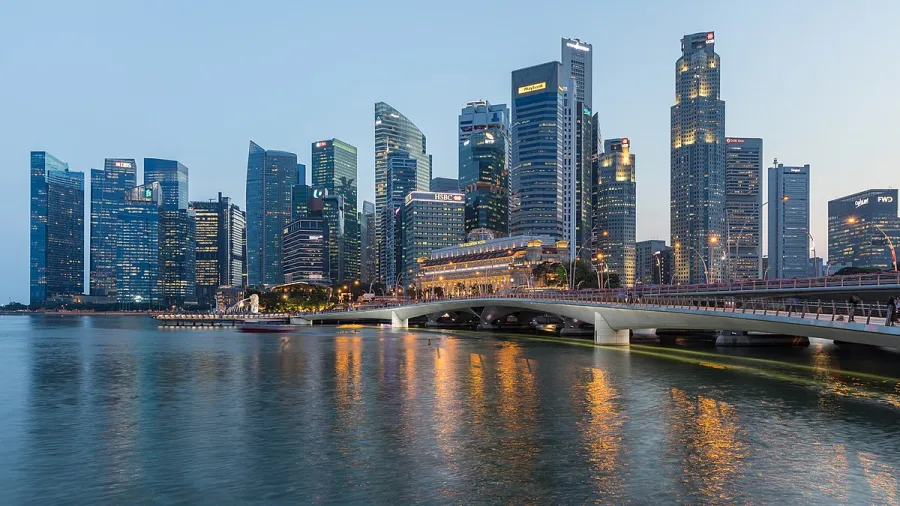
End of moratoriums to rain carnage on Singapore banks' H2 prospects: analyst
Loan moratoriums are set to expire in H2, putting asset and loan quality at risk.
Singapore banks’ resilience will continue to be tested in the second half of 2020 as they face flat growth and yield in the coming quarters amidst the continuously raging economic storm spouted by the pandemic, industry analysts report.
The big three—DBS, OCBC, and UOB—saw their net incomes decline steeply for H1 at 26%, 42% and 29%, respectively, driven by aggressive reserve build-up. Despite this, downside risk should remain limited thanks to solid growth drivers such as their wealth management businesses and healthy capital buffers with common capital ratio in excess of 13.5%, noted Jefferies Equity Research analyst Krishna Guha.
However, credit costs may exceed than what was guided by the three banks, according to Guha. The three banks have kept credit cost guidance unchanged from those provided in Q1 at 100-130bps cumulative credit cost for FY2020 and FY2021 for DBS and OCBC, and 120-130bps for UOB.
This meant that banks may exceed the 36bps (DBS), 41bps (OCBC) and 67bps (UOB) of estimated annualised credit cost for each of the remaining six quarters until Q4 2021.
Guha added that current margin guide is already below past troughs, which equates to a flat yield curve. “Unless the rate outlook changes; flat yield curve, likely competition for deposits in the near future and impact of accrual accounting is likely to pose downside risks to margins.”
“Asset quality visibility is low and a lot will depend on how moratoriums are handled in various jurisdictions,” he added.
Speaking of moratoriums, OCBC faces the most risk with its non-performing loans (NPLs) likely to spill over to FY2021-22, a separate report by Maybank Kim Eng said.
Around 10% of OCBC’s loan book is under moratoriums, which may begin to see pressure as these expire in H2, noted Maybank Kim Eng analyst Thilan Wickramasinghe. In particular, the bank sees risk from its Malaysian exposure, with almost half or 48% of their exposures in the market in moratorium.
As Malaysian moratoriums are set to expire in Q3, this may create elevated risks of NPLs going forward, according to Wickramasinghe.
OCBC’s exposure to Hin Leong Trading also pushed up credit costs, with its H1 credit charges reaching 106bps.
Revenue-wise, DBS fared the best with flat-to-positive net interest income and fees, as well as strong growth in non-interest income, noted to Jefferies’ Guha. But further net interest margin (NIM) compression is expected for H2 2020 on the back of lagged effects from the Q1 rate cuts, according to a separate report from OCBC Investment Research.
Asset quality remains a concern for DBS, although Q2 has not seen much NPL formation, the report stated. In H1, NPL ratio reportedly remained stable at 1.5% due to limited NPL formation in Q2 compared to the 1.6% surge in March.
On the upside, DBS is primarily exposed to larger corporates and multinational companies. These are better equipped to ride out COVID-19 volatility, according to a separate report by Maybank Kim Eng.
Further, DBS’ reserves are now 24% above the minimum requirement from the Monetary Authority of Singapore (MAS). “Nevertheless, we expect asset quality to turn sour—especially amongst small and medium enterprises (SMEs) as moratoriums are lifted,” it added.
But the impact may still be contained given that only 11% of DBS’ loanbook are exposed to SMEs, and 82% of these have not taken out a moratorium, the bank stated.
Overall, DBS’ full year FY2020 NIM is expected to be around 1.6%, implying that H2 NIMs will fall further towards 1.5%. Further, DBS’ loan growth is projected at 5%.
Meanwhile—although UOB’s H1 profits ended up being soft with a 30% YoY decline—NPL ratio remained stable at 1.6%. The bank has a ‘cautiously optimistic’ outlook for H2, with credit costs expected to remain at Q2 levels, OCBC Investment Research said in an analyst note.
UOB’s credit costs increased to 67bps in Q2 from 36bps in Q1 largely due to allowances from non-impaired loans.
However, pressure remains on UOB, especially with 16% of its total loans under moratoriums—a bulk of which are set to expire in H2, Maybank Kim Eng noted.
“Mostly, these are for SMEs and prolonged weak economic conditions may drive some to turn sour,” noted Maybank’s Wickramasinghe. “This may extend higher credit charges to 2021E and 2022E.”
Management claims 10-15% of loans under moratorium may potentially become NPLs. In a worse-case scenario, this can increase bad loans by more than double or 148%, a risk that will likely begin to show by 2021.
Such as scenario may cause MAS to extend the dividend cap to 2021, added Wickramasinghe.
On the other hand, UOB’s capital position remains strong, whilst undemanding valuations largely reflect lowered growth expectations and a gradual recovery path ahead, according to OCBC Investment Research.
Given these factors, CGS-CIMB analysts Andrea Choong and Lim Siew Khee expect UOB’s credit costs for H2 to fall at around 70bp. This translates into 120-130bp or $2-3b over FY20-21F.
For OCBC, falling interest rates regionally should drive NIMs from 1.70% in 2019 to 1.58% by 2021E, whilst gross NPLs may soar from 1.5% in 2019 to 2.9% by 2022E, said Maybank Kim Eng’s Wickramasinghe.
Cost to income should remain flat around 2019 levels of 44% from government wage support schemes and cut backs on non-essential costs in 2021E, he added.
Photo courtesy of Wikimedia Commons.


















 Advertise
Advertise








